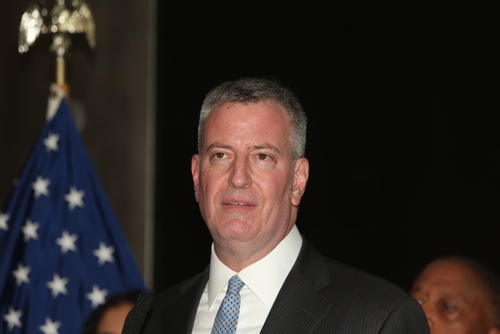New York City public health officials are just full of ideas on how to trim down their constituents: taxing soft drinks, yanking the salt out of recipes, and even banning cooking oils. Now a city councilman from Queens has thrown one more anti-fat scheme in the mix. Citing a new study from the National Bureau of Economic Research (NBER) about an alleged link between obesity and the proximity of restaurants to schools, Eric N. Gioia has proposed – you guessed it – another ban. Should his idea catch on, new restaurants will be prohibited from opening within one-tenth of a mile of Queens schools. But like soda taxes, trans fat bans, and anti-salt crusades, Gioia’s “fast food” prohibition isn’t the answer to slimming down the city’s schoolchildren.
The print edition of today’s New York Times has the lowdown on Sunday’s press conference, where nutrition zealot MeMe Roth chimed in with her trademark hysteria:
“I don’t think we’re taking this crisis seriously enough… You should imagine [the students] as they age. They’re going to be pricking their fingers off and on all day long, checking their blood sugar. Toes and feet will be amputated. Many of these kids go on to have blindness. That’s why we need to do at least this.”
So what makes Roth think that a restaurant zoning ordinance will do anything to prevent limb amputations, blindness, and pricked fingers?
The new NBER research concluded that obesity rates are 5.2 percent higher at schools where a fast food restaurant is no more than a block away. But this is another case of confusing correlation with causation in the obesity blame game.
The Times continues:
An author of the study, which was published by the National Bureau of Economic Research, said the report factored out most extraneous variables, and indeed showed cause and effect.
“We looked at restaurants that open beside a school and whether that changes the fraction of students that are overweight,” said Janet Currie, chairwoman of the economics department at Columbia University. “And it does.”
But Currie never looked at what obesity trends were like before the restaurants opened. Her study only compared obesity rates among neighborhoods at the same time. So students at schools with a neighborhood burger joint have slightly larger waist measurements – but there’s simply no way to know why. And it’s ludicrous to suggest that the very existence of those restaurants caused children to gain weight.
As we told the Times, opening a restaurant next to a school doesn’t “change” the number of overweight students there. People change their own bodies by choosing what they eat, how much of it, and whether to play that pick-up basketball game outside with friends, or inside on the couch.




